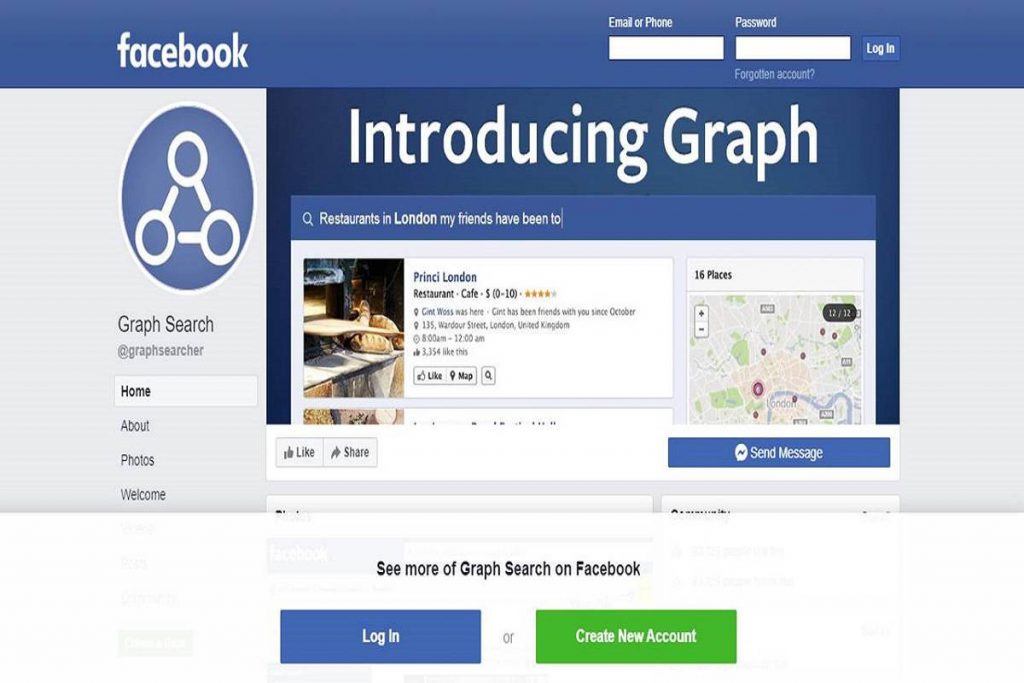For a long time, social search has been announced as a great event. The chance to create the search engine for people is too tempting, and the prize is held above all others in the race to develop the next search engine may be like google.
Facebook has widely recognized a social networking channel and also the only company, apart from the search giant, capable of creating such a product and is one of the main reasons behind its more profit ratio. Few people invest in the strength of the current format; instead, they know that the data they have at hand could change the world in terms of information retrieval and publicity.
That project began to be taken seriously, at least publicly, with the launch of Facebook Graph Search in 2013.
At that time, the product lacked any significant characteristics, and after a brief fanfare, the marketing specialists focused their attention on something else. However, the engineers had obvious instructions to start quickly, and the results of that work are beginning to be seen now.
Table of Contents
What is Graph Search?
Graph Search is the way Facebook maps all the data we provide to the platform advantageously, Without any doubt, the best example of “social search” – the premise of creating a search engine that is not based on websites but entities (people, places and things).
The company has been working quietly since last year. There is still a long way to go, but the foundations of what promises to be the only real rival of Google in the world of organization and information retrieval have already been laid. Only a few days ago, they began to try a new functionality that allows some users to search through the content, as well as search for people, interests and things.
What Search Operators Have to do?
What has changed that makes talking about the Facebook search engine worthwhile again for digital marketing specialists?
The reaction is the introduction of a large number of search operators, or search methods, much more sophisticated and organized in layers at the top of a more extensive set of connected data.
To support and understand what we mean, we have created a free help for Facebook Graph Search. This contains many of the useful connotations that you might want to use to understand your clients or those of your competition better.
This post explains the use of this tool specifically to find, meet and work with influential people in your space and create a much more detailed picture of your current and potential audiences.
How to Use Graph Search
However, before you start extracting useful information from the platform, you need to check if you have access to the search tool in its entirety. To do this, there is a very simple little trick that involves changing the language settings.
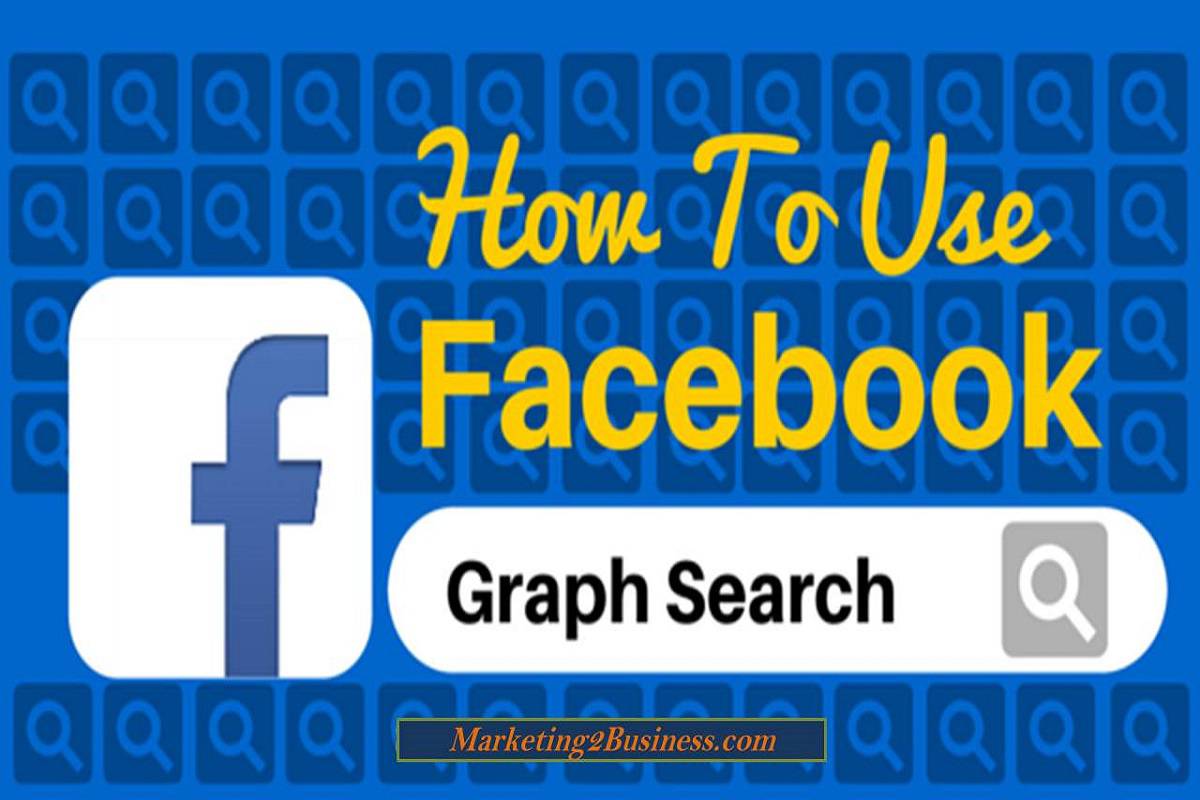
Claim Graph Search
If you are reading this in the United States, then you probably already have Graph Search by default. However, that is not the case for everyone. If you still have the old low-quality search box, you must go to the settings to change it.
To do this, look for the configuration in the top navigation.
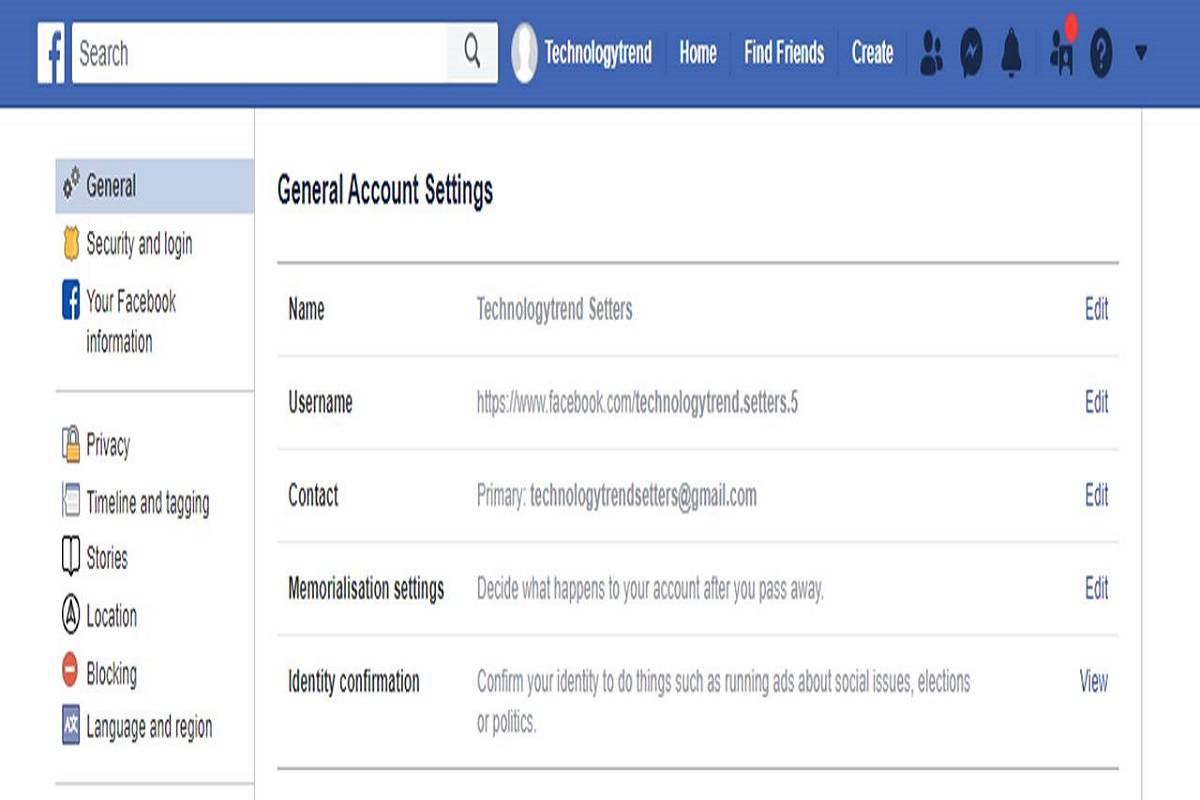
Next, go to General in the account settings and change the language to English (United States). That’s it; you must already have Graph Search enabled.
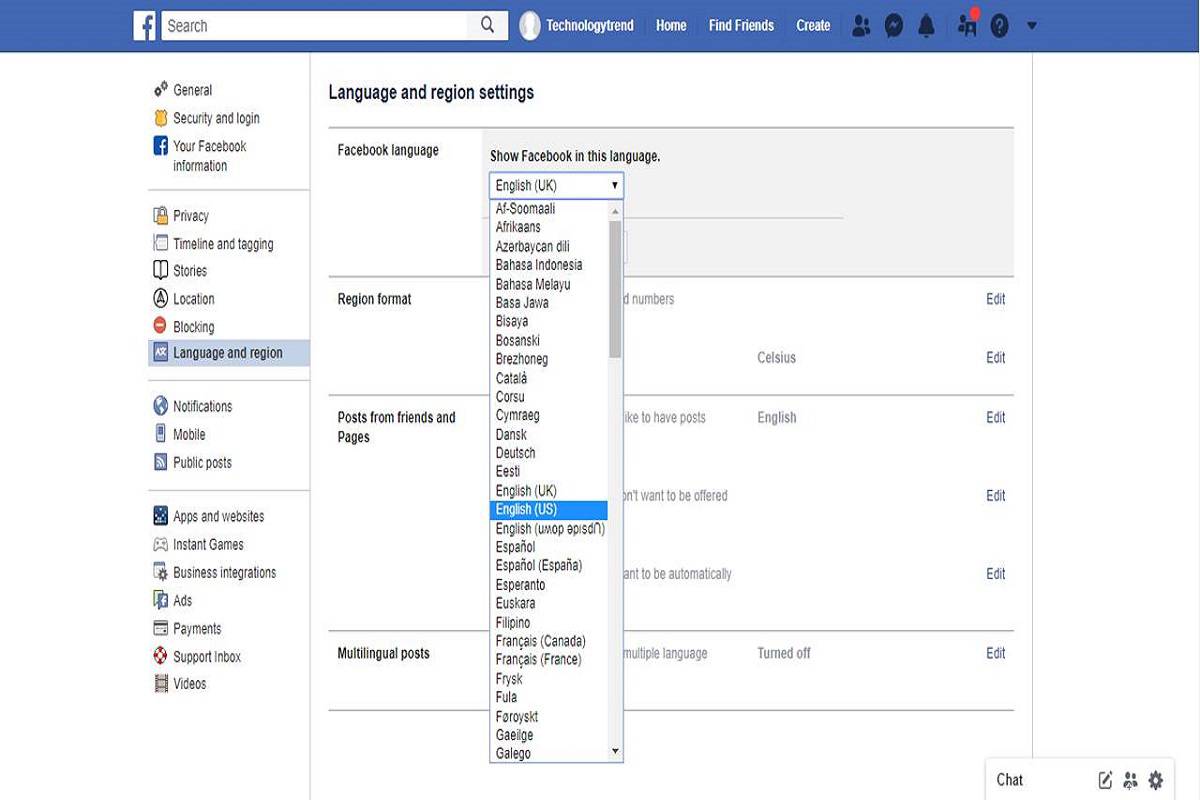
What are the Uses in Marketing
Undoubtedly, there will be many more ways in which marketing professionals will be able to use Graph Search as the months go by and the functionality improves, but by examining the options today we can divide them into five key areas:
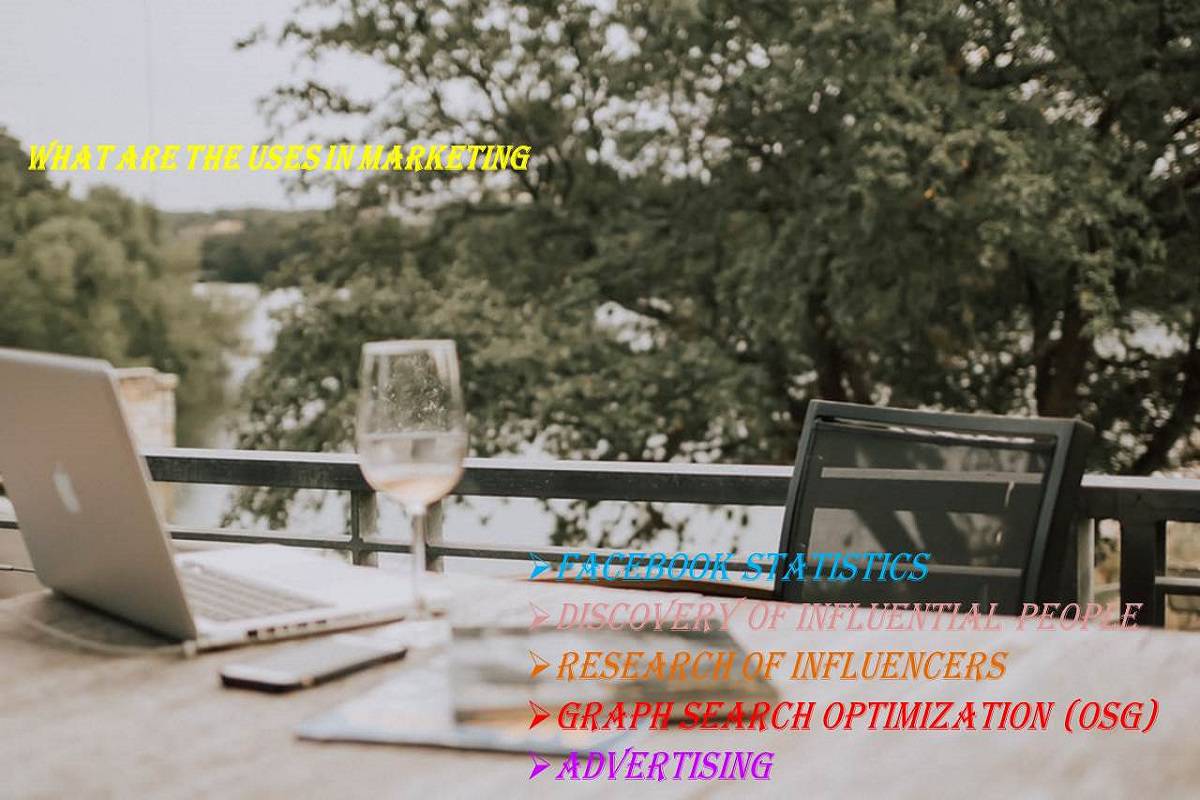
- Facebook statistics
- Discovery of influential people
- Research of influencers
- Graph Search Optimization (OSG)
- Advertising
Facebook statistics
The number one on the list has to be the ability to join the points in your public research work. The endless hours spent by marketing specialists sitting behind unidirectional screens as part of the ethnographic research group in past decades meant that real understanding required intense and expensive work. It was also only partially effective because at the time the data from these methods were processed, weeks or even months had often elapsed.
However, this doesn’t mean that these methods have no value since being in front of your audience to see how they use or interact with your product (s) can be extremely useful. However, the amount of data is small. When you can begin to believe your results, it is when you are handling “large” amounts of data, uniting the beliefs of tens of thousands of current or potential customers.
So how does Graph Search help us? Let’s analyze this in more detail.
Initial investigation
We have already talked about how the functionality of the Facebook search engine has reached leaps and bounds and here we can start putting that into use. We have created a free help to help you navigate through the dozens of search operators.
Now let’s look at a couple of examples in real-time so you can see how it works.
For this review, we have chosen a brand from the entertainment world in the United Kingdom, but we have kept the brand anonymous. However, the process of execution through the data should give you a perfect understanding of how to work through this process, step by step, for your brand.
We can also start something relatively simple: A look at other pages to the liking of people who like the brand. This helps to understand the different interests of the public better:
However, so far, we have not entered anything, especially insightful. To truly immerse ourselves in interesting data, we must find a way to segment these affinities by random brands and pages with broader sets of interests.
To do this, we can rely on Graph Search again to provide us with that detail.
As you can see, some revealing interests are already coming to the fore, and we will analyze them in greater detail a little later.
However, as in any investigation, the results may be biased by small data sets. Therefore, to discard those numbers, it is possible to combine your brand with others in the same space.
Once you have a list of related and useful results, the options are almost endless and at this point that you can decide to add more depth to the most critical areas.
For example, for the brand we take as a guide, it is essential to understand what the public likes drinks and foods since they manage a large number of “brick and cement” points of sale, that is, offline.
Since there may be ongoing discussions around brand ambassadors, it may be useful to extract some information about celebrities, musicians or favorite artists.
These results can be very revealing. You can still dig much more in-depth, but we will analyze that later.
Quantitative data
The challenge with the aforementioned is that although it can give you a significant qualitative vision, the problem lies in calculating how many people in your audience share that same interest. It is perfect to create content that suits individuals, but you can be far from reality if you do not have a complete view of shared interests.
However, fortunately, there is a way to know just that.
We have previously written about the extraction of social data for use in the information strategy, and we can use that same principle here to add the wealth we need to gain the confidence necessary to make real decisions.
The scientific part
Collecting this data is easier than you think, and although it is not perfect, the result deserves the effort.
It seems to us that there are no tools too elaborate, just a little simple math. Also, to help this process have as few problems as possible, we have this simple calculator that should make the process easier.
Step one: Start by going to Facebook Ad Center and click on “create ad”. Then you will find this screen. Click on any of these options, but we will use the Page Likes option.
Once you enter in the console, scroll down until you reach the “public” section.
To start, select the geographical area you want to analyze. You can select to focus on a global audience by default, but for this study, we have chosen the United Kingdom. Next, on the right, you will see how many people are suitable for the selection. For example, here we can see that 36 million people in the UK are on Facebook.
The next step is to add public attention. This can be anything from a benefit to a brand, so let’s start with our brand example (BRAND A). The right column now tells us that there are 96,000 people in the UK who “like” this brand.
The next step is to begin to understand a little more about the interests we identified earlier using Graph Search.
Remember the “interest” in pole dance. Who could not? The question is, how many of those who already show an affinity with the brand “like” this alternative leisure activity compared to the average person?
Market comparison
To do this, we have to add pole dance to our brand customers as you can see below and this gives us a joint audience of 126,000 people.
Now comes the math part, and this is where the calculator can be very useful.
Next, we can see the formula on which the calculator is based, and this will make us better understand how much our pole dance likes.
Using the figures just mentioned, we could create a sum that looks a bit like this and tells us that 6.25% of the brand’s public likes pole dance.
That is perceived as a high percentage, but perceiving it is not good enough. We have to know for sure and to truly understand what it means we have to analyze the average person and then make a comparison between the two.
To do this, we use the same process by first obtaining the figure for the Facebook audience in the United Kingdom and the pole dance audience separately.
Then we can use this simple formula to calculate what percentage of the average Facebook audience likes pole dance.
The result, in this case, is that only 0.1% of the average public likes this particular interest. The audience of the brand proved very interesting since there is a large excess of indexing of this specific interest. Therefore, we know that the content around this topic will have great resonance.
The idea from here is to clean the data and repeat this process for multiple interests so that you can draw a graph and compare with each other as follows:
This is where we begin to understand our audience. The pink column represents the public of the brand we use as an example and the blue the average public of Facebook. We can see where the excess indexing.
These are the interests you want to really focus on as part of your content plan because you know there is a high propensity to interact.
Challenge Ideas
Facebook Graph Search can be useful to upgrade content ideas. Say, for example, that you are running a contest to win restaurant vouchers. Instead of doing the same in a generic way for everyone in the United Kingdom, why not analyze whether there are differences between North and South or a state dividing line?
Next, we see how we have used the same process as described above, but we also analyze how location affects affinity with different restaurant brands.
The above data suggests that there is a clear dividing line between North and South, so it would be better for the marketing specialist to offer McDonalds or Nandos vouchers to the people of Manchester and coupons of the Frankie and Benny chain to the people of London to achieve Greater interaction.
Discovery of influential people
Another area in which Graph Search can be beneficial for marketing specialists is in the search for influential people and key promoters (both are vitally important in today’s marketing plans).
There are several ways to do this.
To start, let’s take a look at our brand example once again and start discovering people with more potential reach. We can use a couple of more advanced Graph Search operators to see who are the people who have grabbed the most attention.
An excellent way to start is by analyzing the blogosphere with a little more detail. This begins with the following search:
- Here we can see immediately that many people have blogs and already like the brand; A brilliant way to start a conversation when you reach them.
- On the other hand, if you strive to find bloggers who follow the brand, why not use this search to see if they are or are friends with people who work for the brand?
- Here we can see what other options are available to us in this section of the Facebook dataset if we want to refine our search. However, it does not end here either because there are many more nuances available:
- If your ultimate goals are the largest sites, it is also possible to search for journalists, as shown below:
- Although you can also refine by location if your campaign needs to be directed to a country, region or city:
- If you want to improve that search further, you can go to specific publications. The search we conducted here for The Telegraph in the United Kingdom brings us to more than 1,000 people, many of whom are key journalists:
- Later we can use the internal search tool to further refine by job:
By using that information to find “writers,” this search is created, and we have a list of twelve people with whom we can then connect through LinkedIn or by calling the newspaper.
Research of Influencer’s
The value that Facebook Graph Search can bring to your marketing plan does not end there either.
Using it to achieve the understanding of your audience and the discovery of influential people in your network is a compelling use in itself. However, you can also use the platform to add more colour to the arguments you use with influencers.
Since journalists are the target of arguments at every hour of the day, enriching that conversation with some previous information can make the difference between success and failure.
It is possible to find out many things about people with this same process and thus understand the journalist you want to work with much better.
Take this search as an example. Let’s say we want to know more about the Deputy Editor of The Telegraph magazine, discovered with this little search:
Next, we can use many of the searches mentioned above to get a better idea of your interests and the things you like.
Knowing that he supports Tottenham Hotspur and that he will be excited for the new In betweeners movie that will be released soon, you will have a brilliant “plug”, and you can start a more cordial conversation.
Also, we can see even where he likes to spend time. Below, you can see one of the many searches that use the Bing map functionality to provide new location-based understanding. It tells us the places that Deputy Editor has visited:
It is precisely this area of Graph Search that could be more promising in the long term. Therefore, taking into account this evidence, we would worry if we administer Tripadvisor or any other web-based on reviews.
While review websites are generally based on the opinion of the general public, Facebook can segment the audience to offer you the idea of anyone from your friends or family to those who have similar interests to yours or nearby ages. That is consistent reviews of people you know and respect.
Graph Search Optimization (GSO)
If Graph Search is going to be more useful, the chances are that people start using it more and that means one thing: the birth of Graph Search optimization, or GSO.
Being on top of those lists could attract a significant amount of traffic to branded pages, and it will be essential to understand how Facebook works.
Currently, there is very little information in this regard, but the logic suggests that the same factors used to sort the Facebook activity wall would apply to Graph Search.
This may mean that the “likes” and the new links of higher weight granted to the “likes” by people and pages with larger audiences will be significant. The more authority the person or brand has behind the connection, the more significant the impact on the Graph Search ranking.
If you later include page actions in the mix, such as the clicks on “like” and “share” and the comments the content receives, as well as the use of applications, etc., you will soon have a clear idea of how you can run the GSO.
Could this mean that digital public relations of the future include work to encourage key influencers to “like” Facebook pages or interact with relevant content? Only time will tell.
Advertising
The value of understanding also extends to social media advertising. Given that CPC (cost per click) is often higher in important commercial sectors, it can be useful to understand where your audience is interacting most.
For example, your target audience is very likely to have an affinity for gardening, creating ad groups to test your advertising in that sector can result in a reduction in CPC.
Not all sets of interests will give good results, and in practice, it is a good idea to create six or more campaigns aimed at the main shared interests and then execute them for a day or two to see how they work.
Conclusion
Facebook Graph Search is here to stay and will be an increasingly important weapon in the arsenal of any marketing specialist as we all look for ways to make our strategies and campaigns more intelligent and capable.
The understanding of the public that it provides and the ability to delve into the small details is why, those who invest in Facebook, consider its real value and it is evident that they have only begun to open the treasure chest.

